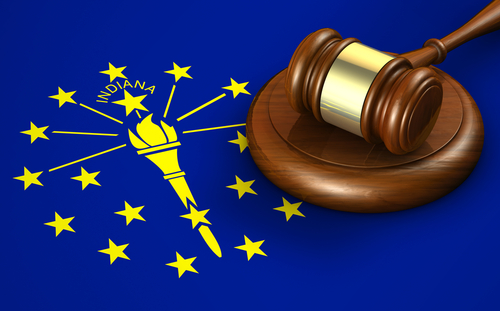Chemerinsky: Two end-of-term decisions close the courthouse doors to those who have been injured

Erwin Chemerinsky
Amid the flurry of end-of-term decisions, two are very troubling. Although the cases arose in different contexts, they both have the same effect: closing the courthouse doors to those who have suffered serious injuries.
Ziglar v. Abbasi
If a state or local government official violates the Constitution, he or she can be sued for money damages under 42 U.S.C. §1983. But there is no federal statute that authorizes suits against federal officers for constitutional violations. In 1971, in Bivens v. Six Unknown Named Agents of the Federal Bureau of Narcotics, the U.S. Supreme Court held that a cause of action for money damages against federal officers could be inferred directly from a constitutional provision. Money damages are crucial to deter wrongdoing and to compensate those injured. As Justice John Marshall Harlan said in a famous concurring opinion, for someone whose rights have been violated, it often is damages or nothing.
Over the last 35 years, the Supreme Court repeatedly has limited the availability of Bivens suits. But Ziglar v. Abbasi goes even further in restricting the ability of those who have been injured by the unconstitutional actions of federal officers to sue. After 9/11, the federal government detained dozens of Muslim men after learning they were in the country illegally. The men were subjected to inhumane conditions, with lights left on 24 hours, repeated strip searches, and physical abuses, including being slammed into walls and having bones broken.
The injured individuals brought a lawsuit, pursuant to Bivens, seeking money damages for the injuries they suffered as a result of constitutional violations.
But the Supreme Court, in a 4-2 decision, held that these plaintiffs could not sue. Justice Anthony Kennedy wrote for the court, joined by Chief Justice John G. Roberts Jr. and Justices Clarence Thomas and Samuel A. Alito. Justice Stephen G. Breyer wrote a vehement dissent, joined by Justice Ruth Bader Ginsburg. Justice Sonia Sotomayor did not participate, likely because the case was before the New York City based 2nd U.S. Circuit Court of Appeals when she was a judge on that court; and Justice Elena Kagan recused, likely because the case had been handled by her office when she was solicitor general.
The court expressed great reservations about allowing Bivens suits. Justice Kennedy stressed concern over “separation-of-powers principles for a court to determine that it has the authority, under the judicial power, to create and enforce a cause of action for damages against federal officials in order to remedy a constitutional violation.”
The court said that the matter’s relationship to immigration and national security, areas particularly within the expertise of Congress and the executive, were reasons not to allow a Bivens suit in this context. Justice Kennedy also emphasized the costs of allowing Bivens actions. He wrote: “Claims against federal officials often create substantial costs, in the form of defense and indemnification.” As a result, the court said that while it was not eliminating Bivens claims, they were not to be extended into “new” areas. The court said “if the case is different in a meaningful way from previous Bivens cases decided by this court, then the context is new” and strongly disfavored. The court found that the claims in this case were different from those in the earlier Supreme Court decisions allowing Bivens suits and thus could not go forward.
The court’s analysis is deeply troubling. The court never recognizes that allowing a Bivens suit is consistent with the court’s primary role in the system of separation of powers: ensuring that the Constitution is enforced and that those whose rights have been violated receive a remedy. Long ago, in Marbury v. Madison, the high court said that this is the pre-eminent role of the courts. Justice Kennedy wrote of the costs to the federal government of allowing Bivens suits, but largely ignores the costs of denying them: Injured individuals receive no compensation for the violation of their rights, and the deterrent effect of damage judgments is lost.
Bristol-Myers Squibb Co. v. Superior Court of California
In a quite different context, the court in Bristol Myers Squibb v. Superior Court made it much harder for plaintiffs to sue corporations. The issue in this case is where a corporation can be sued for injuries caused by its products.
In International Shoe v. Washington (1945), the Supreme Court ruled that due process allows a court to exercise personal jurisdiction over an out-of-state defendant if he or she has “minimum contacts” with the state. In subsequent cases, the court indicated that there were two ways of finding minimum contacts. “General jurisdiction” existed if a defendant had “systematic and continuous contacts” with the forum state. “Specific jurisdiction” existed if the defendant’s contacts with the state gave rise to the cause of action.
In recent years, the court has narrowed both general and specific jurisdiction. As for general jurisdiction, in Goodyear Dunlop Tires Operations, S. A. v. Brown (2011) and Daimler AG v. Bauman (2014), the court said that it exists only if a defendant is “home” in the state. No longer are systematic and continuous contacts with the state, including “purposeful availment” of the state, enough. As for specific jurisdiction, in Walden v. Fiore (2014), the court held that it must be that the defendant’s contacts with the state gave rise to the cause of action. The court has said that for a court to exercise specific jurisdiction, “the suit” must “aris[e] out of or relat[e] to the defendant’s contacts with the forum.”
Bristol-Myers Squibb Co. was sued in California state court for injuries caused by a drug it manufactured and marketed: a blood thinner, Plavix. Eighty-six California residents sued, and they were joined by several hundred out-of-state plaintiffs who claimed the same injuries. General jurisdiction did not exist because the company is not home in California; it is incorporated in Delaware and has its principal places of business in New York and New Jersey. This shows how dramatically the law of personal jurisdiction has changed; until recently, the company’s extensive activities in California would have been enough for general jurisdiction.
The Supreme Court held, 8-1, that specific jurisdiction did not exist, either. Justice Alito wrote for the court, saying that the out-of-state plaintiffs could not sue in California because there was not an “adequate link between the state and the nonresidents’ claims.” Justice Alito wrote: “The relevant plaintiffs are not California residents and do not claim to have suffered harm in that State. In addition … all the conduct giving rise to the nonresidents’ claims occurred elsewhere. It follows that the California courts cannot claim specific jurisdiction.”
Justice Sotomayor wrote a forceful dissent and declared: “The majority’s rule will make it difficult to aggregate the claims of plaintiffs across the country whose claims may be worth little alone. It will make it impossible to bring a nationwide mass action in state court against defendants who are ‘at home’ in different States. And it will result in piecemeal litigation and the bifurcation of claims. None of this is necessary. A core concern in this court’s personal jurisdiction cases is fairness. And there is nothing unfair about subjecting a massive corporation to suit in a state for a nationwide course of conduct that injures both forum residents and nonresidents alike.”
Justice Alito offered three alternatives to the plaintiffs: they could sue together in the state where the defendant is “home”; they could file separate suits in each of their state courts; or perhaps they can sue in federal court.
But what of a foreign corporation that is not “home” anywhere in the United States? What of claims where too few are injured in a state to provide for a mass action? Also, until now, the high court always has said that personal jurisdiction in a federal court is identical to the state were it sits. The conclusion in inescapable that the court has provided substantial protection for corporations—even a corporation like Bristol-Myers Squibb that engaged in a nationwide marketing campaign for its product—at the expense of injured plaintiffs.
Cases about causes of action under Bivens and personal jurisdiction do not make headlines in newspapers. But lawyers know the consequence of the Supreme Court saying that there is no cause of action for damages and that there is not personal jurisdiction. The court has again effectively closed the courthouse door to those who have been injured.
Erwin Chemerinsky is dean of the University of California at Berkeley School of Law. He is an expert in constitutional law, federal practice, civil rights and civil liberties, and appellate litigation. He’s the author of seven books, including The Case Against the Supreme Court (Viking, 2014).



